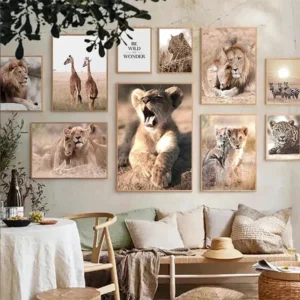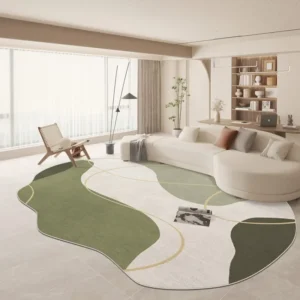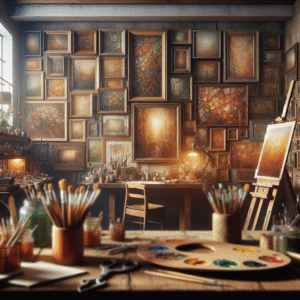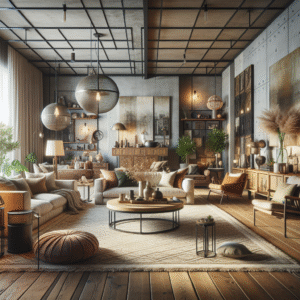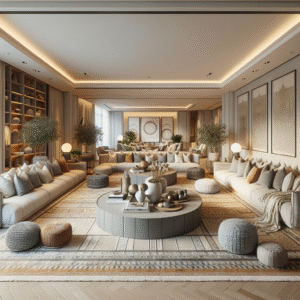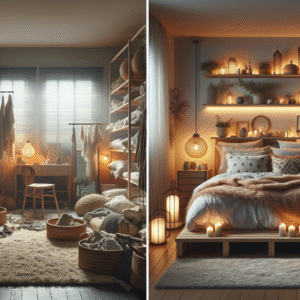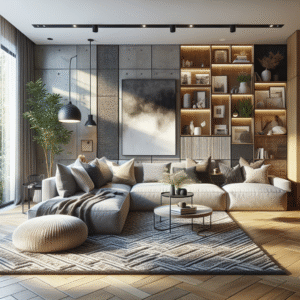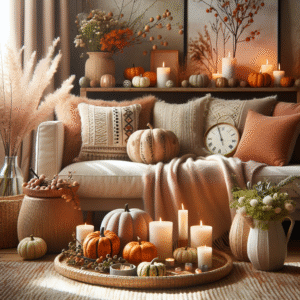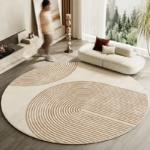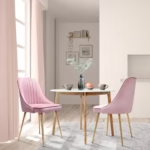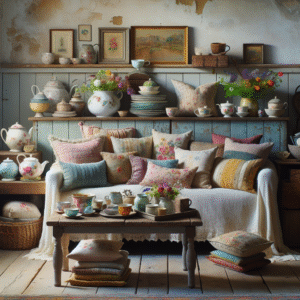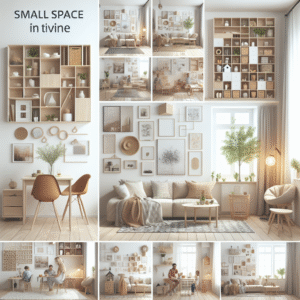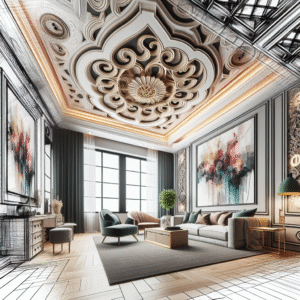Target Audience: Consider what your target audience is searching for. Are they looking for specific colors, styles, or benefits?
Opening Section
Are you feeling overwhelmed by the endless choices of colors for your home? You’re not alone! Selecting the right color palette can be a daunting task, but it plays a crucial role in setting the mood and style of your living space. Whether you’re redesigning a single room or doing a complete home makeover, understanding how color impacts mood and perception is vital.
In this comprehensive guide, we’ll delve into various aspects of color selection, helping you discover what works best for your home and lifestyle. You will learn about color theory, popular trends, psychological effects, and tips for implementation. By the end of this article, you’ll be equipped with all the information to create a harmonious and inviting color palette that truly reflects your personality.
Let’s dive into the fascinating world of color and uncover how it can transform your home!
Understanding Color Theory
What is Color Theory?
Color theory is a foundational concept that describes how colors interact with each other and their psychological effects on people. By grasping these principles, you can make informed choices that resonate with your desired aesthetic.
The Color Wheel
The color wheel is the cornerstone of color theory. It organizes colors based on their relationships, and it consists primarily of:
- Primary Colors: Red, blue, and yellow.
- Secondary Colors: Green, orange, and purple (formed by mixing primary colors).
- Tertiary Colors: Combinations of primary and secondary colors.
Using the color wheel, you can easily identify complementary and analogous color schemes.
Color Harmony
Color harmony refers to the pleasing arrangement of colors. Here are common schemes:
- Complementary Colors: Colors directly opposite each other on the wheel (e.g., blue and orange).
- Analogous Colors: Colors next to each other on the wheel (e.g., red, red-orange, red-yellow).
- Triadic Colors: Three colors evenly spaced apart (e.g., red, yellow, blue).
Emotional and Psychological Effects of Colors
Colors evoke emotions and can influence the atmosphere of your space:
- Red: Passion and energy.
- Blue: Calm and tranquility.
- Yellow: Happiness and warmth.
- Green: Balance and renewal.
- Purple: Luxury and creativity.
Key Takeaway: Understanding color theory helps you align colors with your emotional desires and functional requirements.
Popular Color Trends for 2023
Current Trends in Home Color Palettes
Color trends evolve each year, reflecting societal moods and preferences. Here’s what’s trending in 2023:
Earthy Tones
Earthy colors like terracotta, olive green, and muted browns offer a natural and calming environment. These shades resonate well with the growing trend toward sustainable living and biophilic design.
Bold Shades
Bold colors such as deep navy blue, fiery red, and emerald green are making a statement. These colors can add character and drama, especially when used as accent walls or in accessories.
Soft Neutrals
Soft neutrals, like beige, soft gray, and pastel shades, promote a serene atmosphere. They are versatile and provide a perfect canvas for showcasing artwork or other bold accents.
Key Insight: Trends come and go, but your color choices should ultimately reflect your personal style.
Choosing the Right Color Palette for Different Spaces
Room-by-Room Color Guide
Each room serves a different function, and your color choices should cater accordingly.
Living Room
The living room is your home’s social hub. Opt for colors that foster conversation and relaxation. Warm tones like soft yellows and light grays can create an inviting atmosphere.
Bedroom
For restful sleep and relaxation, muted colors like soft blue or lavender can promote serenity. Avoid vibrant colors that may disrupt peace.
Kitchen
Kitchens benefit from energizing colors. Bright whites and cheerful yellows can make your space feel inviting and cheerful, encouraging creativity while cooking.
Practical Tips for Implementing Your Color Palette
Strategies for Effective Color Implementation
Sample Your Colors
Always test paint samples in your living space. Colors can look vastly different in various lighting conditions, so make sure to observe them in both natural and artificial light.
Use Color Psychology
Consider how you want to feel in each room and select colors accordingly. For instance, if you’re frequently stressed, opt for calming hues in your office.
Balance Your Palette
Aim for a harmonious balance of colors throughout your home. Use a 60-30-10 rule: 60% main color, 30% secondary color, and 10% accent color.
Tools and Resources for Color Selection
- Color Matching Apps: Use technology to visualize color combinations.
- Professional Color Consultation: If you’re unsure, seeking expert advice can offer personalized assistance.
Conclusion & Next Steps
Choosing the right color palette for your home is more than just a decorative choice—it’s about creating an environment that feels right for you. By understanding color theory, exploring current trends, and applying practical strategies, you can create a cohesive look throughout your space.
If you found this guide helpful, consider diving deeper into specific topics, such as selecting furniture styles or learning more about lighting to complement your newly chosen colors.
FAQ
What colors make a room look bigger? Light colors like whites, pastels, and soft neutrals can help a space feel more open and airy.
How do I choose the best colors for my home? Start by considering the mood you want in each room, test paint samples, and balance your palette.
Content Disclaimer
Information provided is for educational purposes only and should not be viewed as professional advice.
This comprehensive guide serves as your go-to resource for understanding how to select the perfect color palette for your home. Whether you’re looking to refresh your existing spaces or embark on a new design adventure, these tips and insights will empower you to make the best decisions for your unique environment.
Categories
- Accent Walls & Ceilings (10)
- Art Curation & Gallery (25)
- Bedding Style Trends (41)
- Bedroom Makeover (30)
- Bohemian & Eclectic Styles (10)
- DIY & Budget-Friendly Decor (9)
- Eco-Friendly Design (10)
- Furniture Care (29)
- Home Decor & Design Ideas (101)
- Home Wellness Spaces (10)
- Integrated Outdoor Living (9)
- Kids and Nursery Decor (10)
- Living Room Decor (30)
- Minimalist & Japandi Style (13)
- Mix & Match Techniques (29)
- Modern & Contemporary Design (9)
- Rug Sizing & Placement (29)
- Seasonal Home Decor (32)
- Small Space Solutions (14)
- Wall Art & Painting Tips (32)
Recent Posts
Recent Comments
Archives
Product Gallery
-
 African Grassland Animal Scenery Poster Autumn Canvas Painting Lion Zebra Giraffe Prints Pictures for Modern Home Room Decor
African Grassland Animal Scenery Poster Autumn Canvas Painting Lion Zebra Giraffe Prints Pictures for Modern Home Room Decor
-
 Large Area Green Rugs for Bedroom Nordic Living Room Decoration Shaped Carpet Irregular Plush Lounge Rug Home Thick Washable Mat Rated 5.00 out of 5$57.07 – $359.83Price range: $57.07 through $359.83
Large Area Green Rugs for Bedroom Nordic Living Room Decoration Shaped Carpet Irregular Plush Lounge Rug Home Thick Washable Mat Rated 5.00 out of 5$57.07 – $359.83Price range: $57.07 through $359.83 -
 Nordic Style Rugs for Bedroom Morandi Living Room Decoration Carpet Large Area Geometry Lounge Rug Home Cloakroom Non-slip Mat Rated 5.00 out of 5$40.98 – $620.81Price range: $40.98 through $620.81
Nordic Style Rugs for Bedroom Morandi Living Room Decoration Carpet Large Area Geometry Lounge Rug Home Cloakroom Non-slip Mat Rated 5.00 out of 5$40.98 – $620.81Price range: $40.98 through $620.81






